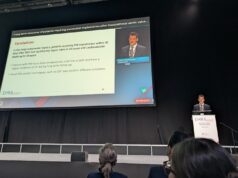
Lindsay Anderson (Duke Clinical Research Institute, Duke University Medical Center, Durham, USA) and others report in the American Heart Journal that, compared with medical management, percutaneous coronary intervention (PCI) is not associated with a significant reduction hospital readmission for syncope in older patients with syncope and obstructive coronary artery disease. However, it was associated with a significant reduction in mortality at three years.
Anderson et al report that in patients with syncope who are at risk of coronary artery disease, “the primary goal of syncope evaluation is to identify ischaemia as a potential aetiology since the treatment of reversible causes of syncope, such as ischaemia, can significantly reduce morbidity and mortality in this population.” However, they add that if obstructive coronary artery disease is identified in such patients, a causal relationship between ischaemia and syncope “may not be inferred” because the syncope could be caused by another condition—noting that like coronary artery disease, other potential aetiologies of syncope (eg. autonomic dysfunction) increase with age.
Furthermore, the authors write that little evidence is available to guide management decisions (eg. revascularisation or medical management) in syncope patients with obstructive coronary artery disease. “This is of particular concern in the older population, given the procedural and bleeding risks associated with long-term antithrombotic therapy after PCI,” Anderson et al comment.
Therefore, they reviewed data from the National Cardiovascular Data Registry (NCDR) to compare outcomes of patients, aged ≥65 years, with syncope and obstructive coronary artery disease who underwent PCI with those of patients who received medical management. The primary outcome was readmission for syncope.
Of 7,338 patients with syncope and at least one vessel obstructive coronary artery disease, 44% received PCI. Anderson state that it is “perhaps unsurprising” that less half of the patients underwent PCI, claiming: “We suspect the reluctance to proceed to PCI, even after the invasive angiography, reflects provider uncertainty of benefit versus risk, and may be tempered by patient preference in the absence of definitive guidelines recommendation.”
At 90 days, the risk of all-cause readmission was not significantly different between the two groups. Additionally, at three years, the rate of readmission for syncope was 7% for patients who underwent PCI and 6.1% for patients who received medical management—a non-significant difference even after adjustment. Anderson et al state: “In fact, less than one in 10 patients in both the PCI and medically managed groups had readmission for syncope in the next three years, suggesting overall effective management in this older adult population.”
However, at three years, PCI was associated with a significant reduction in mortality compared with medical management: all-cause mortality was 27% for the PCI group vs. 30.3% for the medical management group. The authors comment that although differences between the PCI group and the medical management group were “well-matched” in the propensity-matched cohort used to examine outcomes, “the PCI-treated population could still be an overall healthier population than the medically managed patients. Alternatively, syncope itself may be prognostic of long-term risk, supporting the benefit of PCI.”
They conclude that the results of the study “strongly suggest the need for randomised studies to more definitely assess the benefit/ratio of PCI among elderly syncope patients with coronary artery disease.”
Study author Tracy Wang (Duke Clinical Research Institute, Duke University Medical Center, Durham, USA) told Cardiovascular News: “These results tell us not to reflexively stent these patients. Short of a critical left main lesion, I would probe the patient for ischaemic symptoms and reserve a PCI primarily for patients who are symptomatic.”












